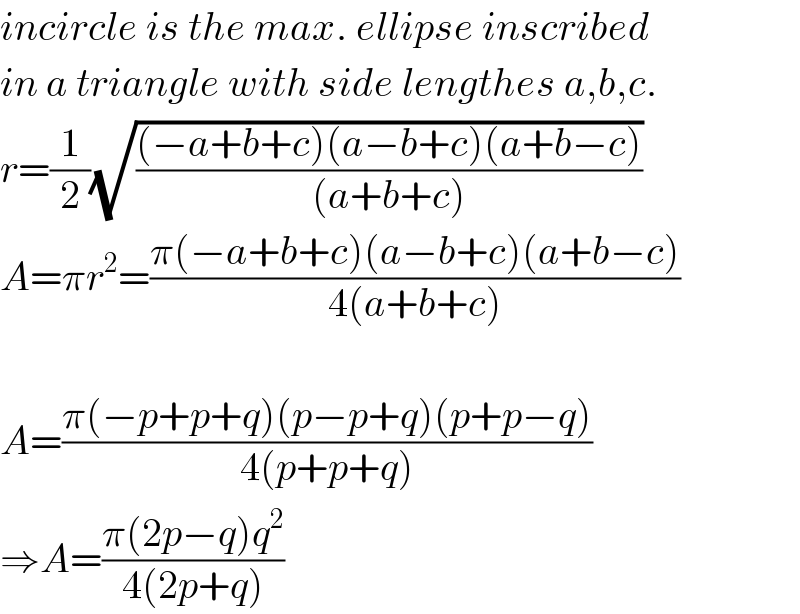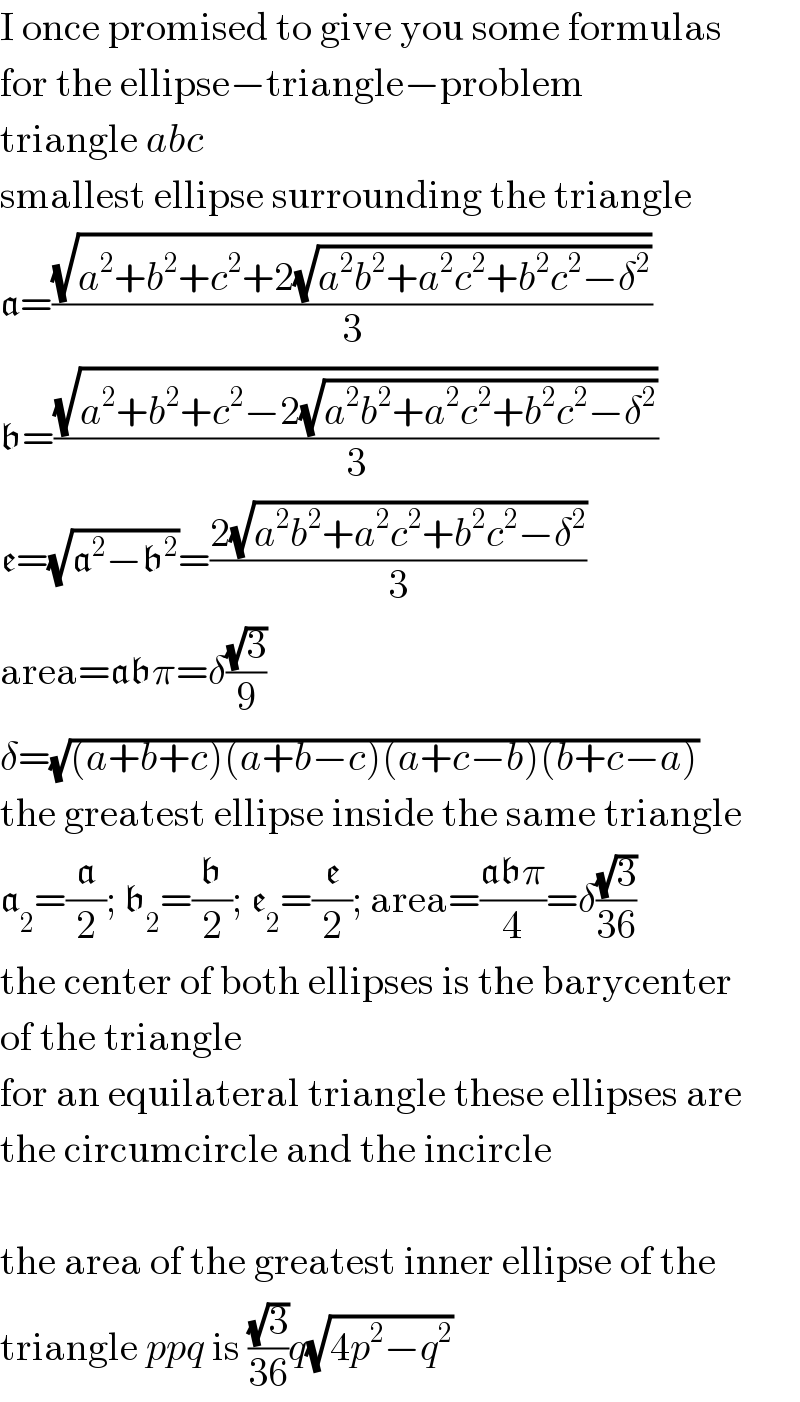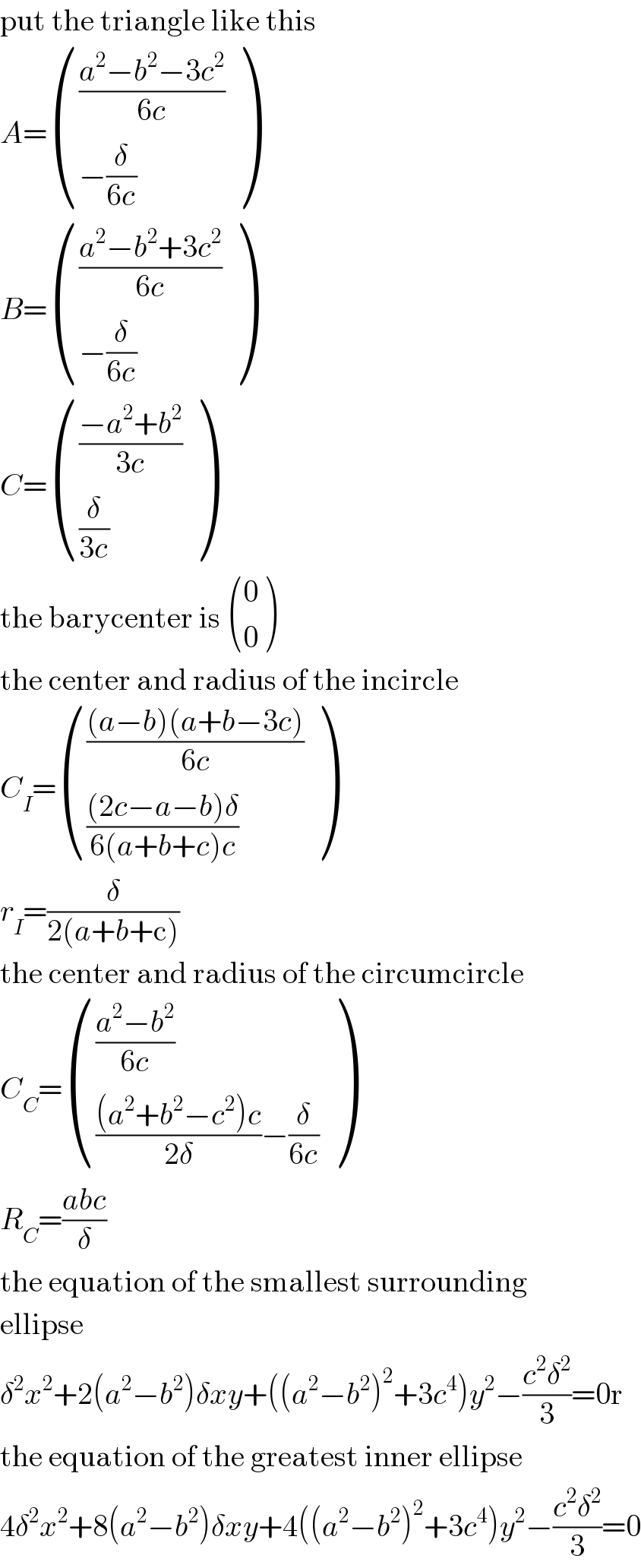
Question and Answers Forum
Question Number 37447 by ajfour last updated on 13/Jun/18

Commented by ajfour last updated on 13/Jun/18

Commented by MrW3 last updated on 13/Jun/18

Commented by ajfour last updated on 13/Jun/18

Commented by MJS last updated on 13/Jun/18

Commented by MrW3 last updated on 13/Jun/18

Answered by ajfour last updated on 13/Jun/18
![let altitude of triangle be h. Also let BC be x axis with mid point of BC as origin, the vertical as y axis. Since AC is tangent to ellipse, h−b=(√(a^2 m^2 +b^2 )) where m=(h/(q/2)) ⇒ a^2 =((h^2 −2bh)/m^2 ) ...(i) A_(ellipse) ^2 =π^2 a^2 b^2 let b=x ,then using (i) A_(ellipse) ^2 =π^2 (((h^2 −2hx)/m^2 ))x^2 (dA_(ellipse) ^2 /dx) = ((π^2 h)/m^2 )(hx^2 −2x^3 ) for max. area we have 2hx=6x^2 ⇒ b=x= (h/3) and using (i) a^2 =[h^2 −2((h/3))h]/m^2 a= (h/(m(√3))) ⇒ unless m=(√3) , max. area ellipse inscribed in triangle is not a circle. A_(ellipse, max) =𝛑((h/(m(√3))))((h/3)) and with m=(h/(q/2)) A_(ellipse , max) =((𝛑hq)/(6(√3))) = ((𝛑q(√(p^2 −(q^2 /4))))/(6(√3))) .](Q37452.png)
Commented by MrW3 last updated on 13/Jun/18

Answered by MJS last updated on 13/Jun/18

Commented by MJS last updated on 13/Jun/18

Commented by ajfour last updated on 13/Jun/18

